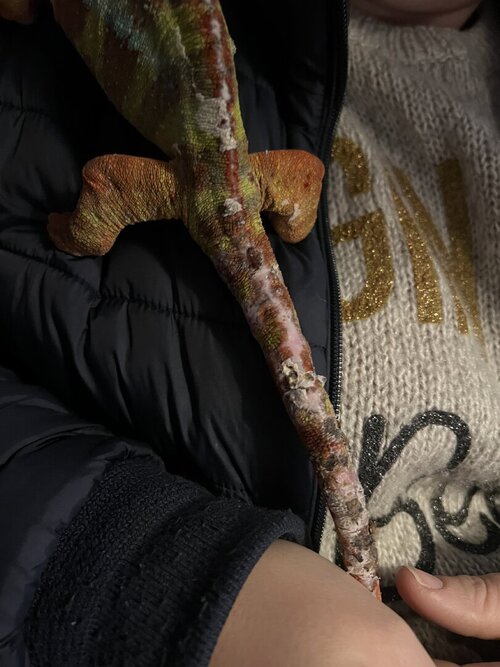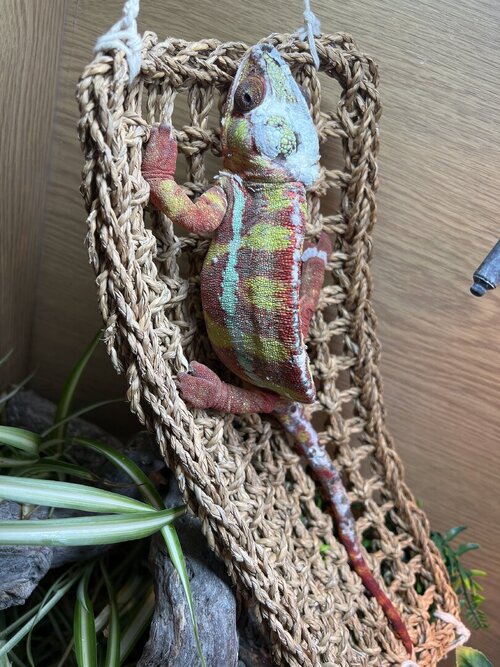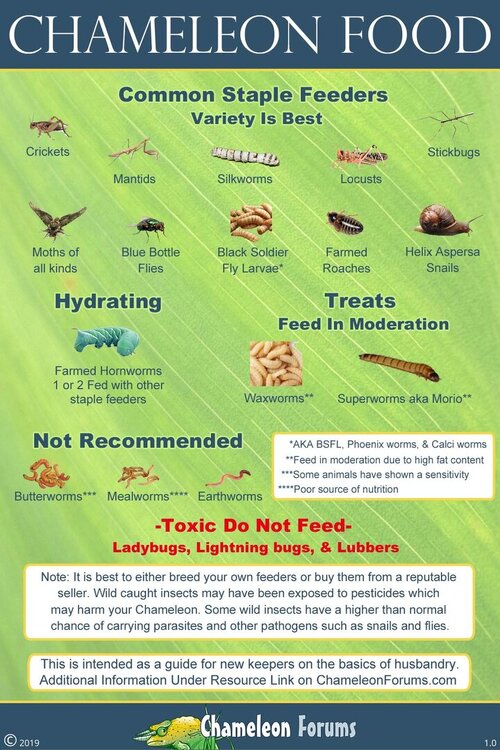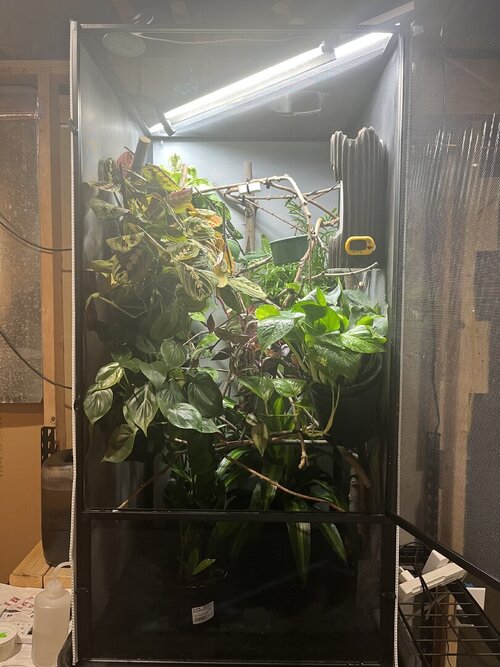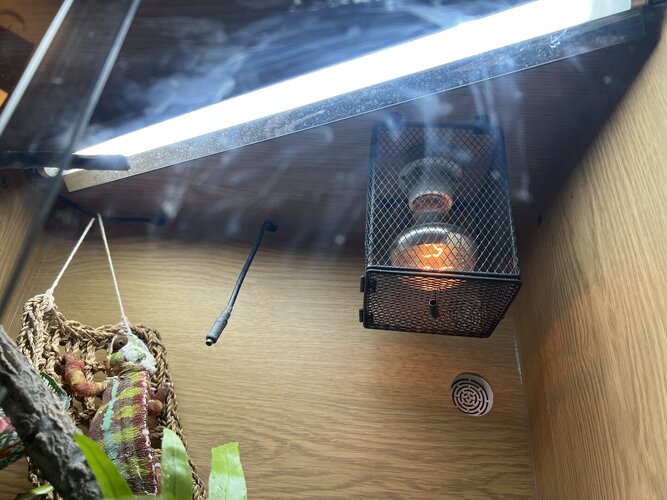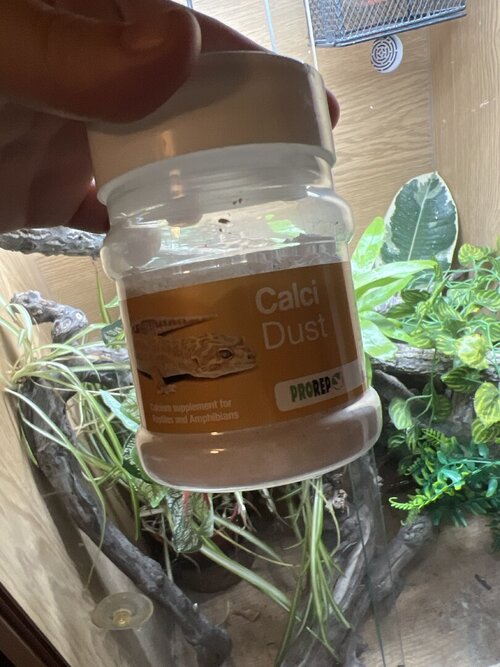Hello, I am new to owning a chameleon as I’ve had to take him in from a friend who cannot look after him anymore. He’s a panther chameleon, around three years in age.
The previous owner said that crickets had been eating his tail and that’s why they were scabs there… I just wanted to know if there is anything I can do to help the sores or/and any tips to avoid this… he is now being fed locust instead. (I’ll upload a photo.
Any other general tips Will help, I’ve already swapped out plastic plants for live plants and looking at installing a drip for him.
Thank you.
The previous owner said that crickets had been eating his tail and that’s why they were scabs there… I just wanted to know if there is anything I can do to help the sores or/and any tips to avoid this… he is now being fed locust instead. (I’ll upload a photo.
Any other general tips Will help, I’ve already swapped out plastic plants for live plants and looking at installing a drip for him.
Thank you.

